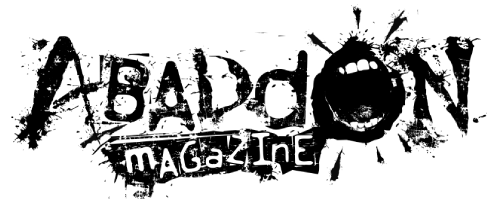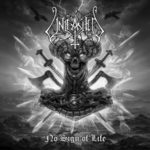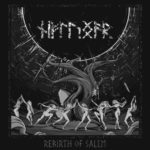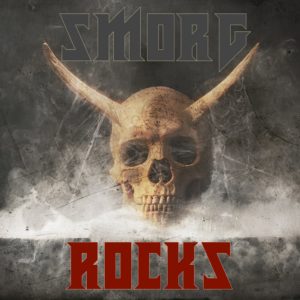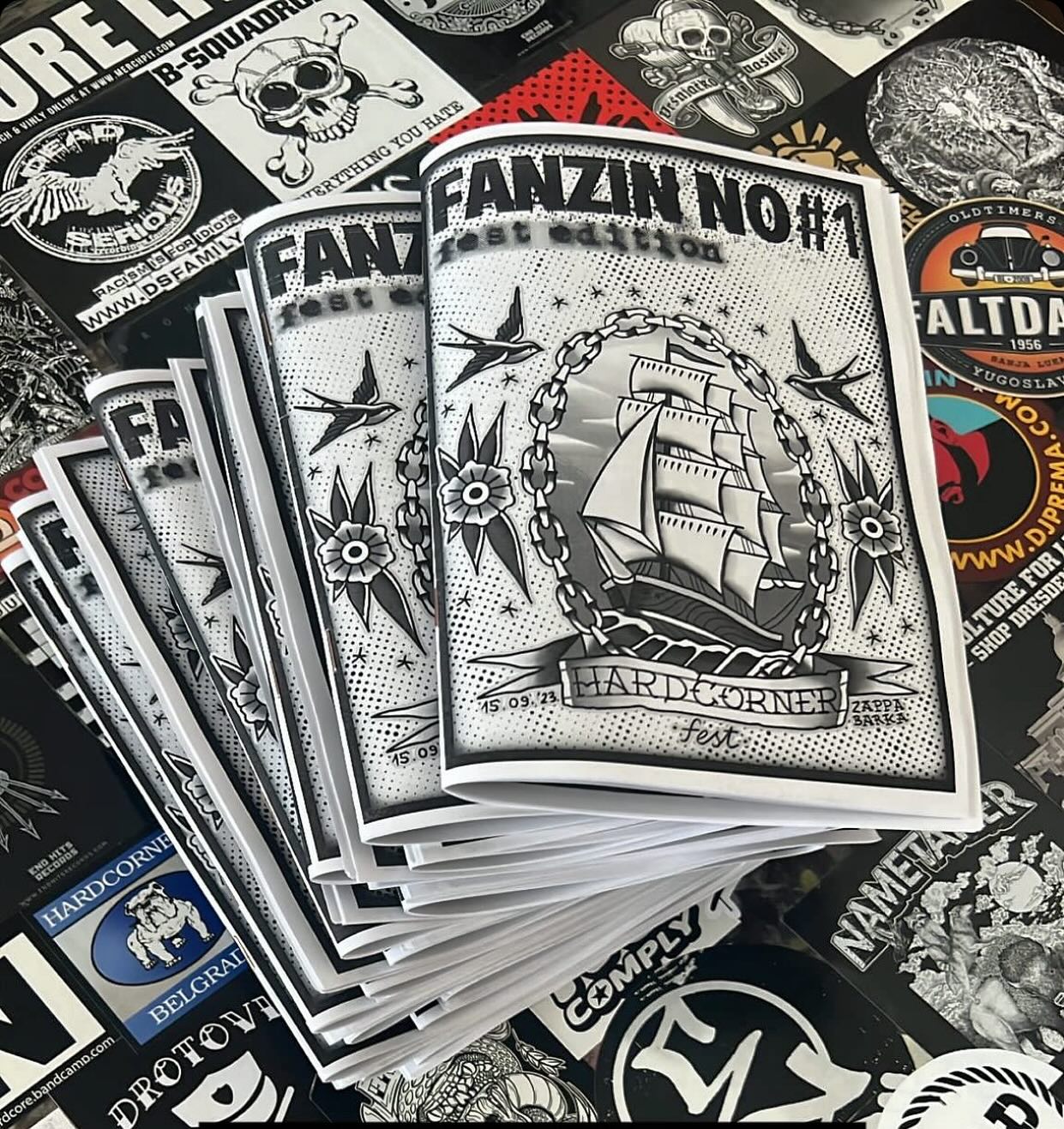Hundred Headless Horsemen are riding through metal realm since 2014. In their own words: “We wear the black cloaks as our ritual talismans to disappear into the entity that we collectively form. This helps to strip away the ego that could sometimes hinder our abilities to present the energies that want to talk through us in their pure, unfiltered forms.” The anonymous, mystic, unique Finnish band will not remain you indifferent.
Hi, welcome to Abaddon Magazine!
Thank you. We appreciate the chance to share our thoughts with your magazine.
For how long have you been riding in the metal realm?
We have been riding together as a group of headless horsemen since the summer of 2014.
You are pretty much mystic, so can you reveal to me what characters hide behind the hoods?
We made this decision not to present ourselves as the key figures in the hundred headless horsemen story, but to focus on serving the concept of our music as best we could. The way we see it, is that the world we have created with and around the music is what is interesting and not our personas.
Our thinking on this matter is also highlighted in the name of our collective. For us, the concept of “headlessness” also brings up the subject of authorship. As a band we have sought to remain anonymous and when performing, we wear the black cloaks as our ritual talismans to disappear into the entity that we collectively form. This helps to strip away the ego that could sometimes hinder our abilities to present the energies that want to talk through us in their pure, unfiltered forms.
How long did it take to find your unique path?
We have walked down numerous paths looking for the style of expression that would best serve what we want to convey as a band. Although our sound and approach to it has been ever evolving, the essence of what brought us together in the first place has stayed the same. Since the moment when we have played together for the very first time, we sensed a unique feeling of a strong, dark energy wanting to talk through us.
Creating and recording our very first, self-titled, EP was quite a trip for us all. We locked ourselves into our hideout and recorded all the songs live during one weekend without a moment of rest to preserve the raw energy that was flowing through us.
On our second EP Hexagon, we started opening up our sound for more experimentation and layering, for example with the occasional clean vocal phrases and leaps to a more progressive style of metal. It now feels like quite a natural stepping stone towards our latest work, “Apokalepsia”, where we took all these ideas further and brought in a lot more experimentation and progressiveness.
“Apokalepsia” is a better representation of what we are trying to convey through our music at this point in our journey. Also, we all knew we were working on something that resonated with something deep inside us that we wanted to share with the world. One important factor that we hope we can preserve in our creative process in the future as well is the ability for listening where the energies that have spoken through us so far want to take us. This is something that one cannot take for granted.
What message do you want to deliver to fans?
We would like to encourage anyone listening to our music to take one step further and to dive deep into the world of “Apokalepsia”, read the texts that describe the world we have painted with sound and watch the videos that provide visual clues into this microcosm. If there are some sections of this material that we would would like to highlight here, they could be these paragraphs, taken from journal entries of apokalepsia victims:
“The momentum that upholds life comes from death, darkness and decay. No matter how delusional we become, our efforts will never be grand enough to transcend this circular motion. In a stark contrast to nature, the economy was always a fiction. A fiction that nevertheless had very real consequences to our lives, which have led us to the profound misinterpretation of its true form. The system we had built long ago is now eating us alive.”
“Many of us had bright ideas, but in the end, our egos were always standing between the ideas and actually living them. During times of crisis, we often found a way to look steadfast into the ray of light that shined hope into our isolated existences. Were we ever able to remind ourselves that the whole spectrum of life upon this earth was just as precious as our own? Or did we merely fall back to building fortresses against our own fears?”
“Apokalepsia” is a conceptual album. Why did you choose to focus on apokalepsia?
We were interested in exploring how a large part of our perception of reality is actually forged by fictional stories or distorted perspectives. With enough power of persuasion, it is possible for a large number of us to fall under collective delusions regarding the nature of the reality surrounding us.
A particularly dangerous example of these delusions is the fact that, as we are speeding towards an ecological disaster at a rate which should make us question the very foundation of our societies, it still seems easier for us to imagine the demise of the nature that created us, than a change in the economical system that is a creation of our own imagination.
Even with stakes this high, it seems impossible for us to tackle the persuasive power of the system we have internalized. What kind of counter force could then shake us out of this illusion and to shift our perception? Did we need a warning to go off inside our own bodies to see what the larger biomass around us was already experiencing? As it happens, when we were working on this project, these questions, or at least some derivatives of them, were suddenly on the forefront of human minds everywhere.
What we are suggesting is that the change in perspectives could be happening already. Whether it is because of a virus or a paralysis caused by a failure to function in a world defined by doom, the stories told today are not the same ones that have been told for the last couple of centuries. What “Apokalepsia” ultimately deals with is the imminent shift in the center of our universe, the shift away from anthropocentricity and the numerous pathways that can lead into it.
In May you performed “Apokalepsia” in its entirety. The album release live stream “No Longer Human” was held at a secret location. For how long did you prepare for it?
We indeed presented the whole album concept as a stream gig that can be also seen from the following link: https://bit.ly/34paHqG. One can say that the preparation for the stream gig was always a part of the album creation process. The visual aspect of our art is very important for us. We have been extremely lucky to be able to work with a gifted group of artists as the extended art collective of HHH who collaborated with us for the whole visual experience.
What was the biggest challenge?
We felt strongly during the presentation that the energy that guided us to start the journey for the band was there. It was a powerful experience to finally be able to “merge” into being a part of this energy, as only live rituals ultimately allow. The biggest challenge was to find the right way to push that energy through to the world, while having no control over how the listener on the receiving end would be taking part in the process. In a normal live setting you can obviously have more influence over how immersive the overall experience is, in contrast to a streaming show that can be received in virtually any kind of setting.
I must notice that visual effects had a very significant role. Tell me something about the team who worked on this whole experience.
One of the most fascinating experiences in creating the visual form for “Apokalepsia” was the shooting of the album cover photo and the music video for the “No Longer Human”. We entered an abandoned 1800 century villa in the Finnish countryside. This place has not been inhabited by people for decades if not more. A strong feeling of life long gone inhabited these quarters. Artifacts from the past that had been left behind were scattered around the rooms in a manner that suggested a hasty departure. Convinced this was exactly the setting that would provide the right kind of visual clues for the story we wanted to tell, we proceeded to turn the biggest room in the building into a huge camera obscura. We covered the windows with black sheets and stroked one small hole to one of the sheets. And behold, the outside world painted itself as an upside-down image on the wall. We sat there silently for hours watching the sun move across its arch from one end of the room to the other, mesmerized by the dreamlike images that were slowly unfurling before our eyes. The idea for this project and its implementation was courtesy of Karl Ketamo http://www.karlketamo.com, a very gifted photographer and visual artist who we have been extremely happy to work with on the visual form of the “Apokalepsia” experience.
From our team of collaborators we also have to mention Blitzlight, the mastermind behind the lights on all our live shows since day one and VJ Hellstone https://www.vjhellstone.com, very acclaimed live visual artist who helped us in presenting the visual world of “Apokalepsia” in our live sets as well.
If I would pick the best album impression, that would be the atmosphere for sure. What is yours?
Thank you. We do agree with that; for us the whole experience is the key, the concept and truly being able to create a holistic experience of very important topics. Still, even for us, listening to the album is a step to the unknown because there are details hidden in the background that slowly make their way towards the center of the stage on each listen.
What is the essence of your music?
The story of the HHH began, and the essence of our creative work together was revealed to us in the summer of 2014.
As a result of an odd twist of faith, one of the members of the band received a postal package containing a skull of a reindeer killed by a wolverine. This rotten skull seemed to be an amalgamation of that overwhelming stream of darkness that had long wanted to talk through them. This energy made us start our journey.
The skull spoke about the forces that our minds were unable to fathom, in the dark forests just beyond our backyards. It laughed at our fantasies of nature as a harmonious or wholesome entity and suggested instead that what we want to see as such is an intricate balance of discordant powers driven only by the will to survive. And that will was a power whose weight we were all too incapable of conceiving. Because survival knows no conscience. It is the momentum that keeps the circle of life in rotation, where death, darkness and decay are necessities for life and not its antitheses.
I have an impression you guys have created your own micro world, since you live in an isolated area, how much does it effect on music you are creating?
Our physical surroundings definitely have an effect on our creative work and on our way of being in the world in general. It helps that you are daily reminded very concretely of the scale of human endeavors against the massive backdrop of the almost all encompassing nature. We see this as a foundation for understanding our place in the universe and also for our ability to the energies surrounding us. The energy speaking through us is not a component of the human world but a component of existence in its purest form.
You decided to stay anonymous, but on this album you had a little help from Mikko Suikkanen on electric violin, Saergu on modular synthesizers in The Road and Titus on percussion on The Road and Spleen. Tell me something about their role and your cooperation.
All of the guests on the album are people that we have been working very closely with in other projects. Their influence and help on our path to become the HHH that we are today has been priceless and far beyond the scope of this interview to cover comprehensively. On the latest album, we wanted to bring all of their voices into the songs to expand our palette of expression as a collective. This is definitely something that we would like to explore in more depth in the future.
Also we see it as a part of the concept album as having some musicians representing themselves with their real names thus linking the album’s concept to the natural world, beyond the universe of “Apokalepsia”.
What do your live performances look like, any concept, how carefully do you prepare it?
The album release stream show that we talked about earlier is a very good representation of what our live performances look and feel like. We always aim at having the full visual experience at the audience because we feel it is an essential part of making the performance as immersive as possible. And it needs to be that in order to convey the energy that we want to give out to the listener. We see everything we do as a part of the experience.
Where do you find an inspiration for your music, which are your music influences?
We have chosen death metal as our tool to tell our stories, but we draw our inspiration from a wide range of sources and do not really care too much about genre boxes, both as listeners or makers of music. It is impossible to name just one artist here as our influences come from anything from the prog and kraut legends of the 70’s through old school death metal of the 90’s all the way to contemporary classical and electronic music.
The stoner and doom metal of Sleep, YOB and High on Fire has a been huge source of inspiration for us, as well as the “post-metal” of Neurosis, Old Man Gloom, Sumac, Isis, Sólstafir, Cult of Luna, Deafheaven and Wolves in The Throne Room. The “Post-metal” genre label might, in itself, be slightly problematic, but however one likes to classify acts, their music has certainly been very influential to us.
Icelandic black metal acts like Auðn, Zhrine and Misþyrming for example, seem to be able to combine the raw abrasive power of black metal with atmospheric and psychotropic tendencies in a way that really resonates with us.
Then there are of course acts that, by sounding unlike anything but themselves, have created almost a genre of their own, like Sunn O))) and Swans. It is impossible to cite every name that has influenced us because this varies through time and the person in the band you might be asking this from and this is why we put together a playlist of music that we have found inspirational. We update the list every now and then when something catches the attention of any one of our members. You can find the list from here: https://spoti.fi/3mFogJc
There are a few legends referring to headless horsemen. Why hundred in band name and which legend or story about headless horseman inspired you the most?
When we were starting the band we heard about this old Irish folk tale about a headless horseman, the dullahan (“dark man”), a headless, demonic fairy riding a horse and carrying their head under their arm and carrying a whip made from a human corpse’s spine. As the dullahan stops, it calls out the name of the person whose soul it has come to summon and as the soul escapes, a death occurs. According to the legend, the dullahan is the re-incarnation of the Celtic fertility god Crom Dubh who took on the form of the headless rider after the introduction of Christianity to Ireland and the end of the old human sacrificial traditions. The frustration caused by not being heralded its customary share of sacrifices drove Crom Dubh to roam the land in search of souls it could capture in the form of a dullahan.
For us this story evoked the power of the circular motion of life that is kept in rotation by death, decay and darkness, something that has occupied our minds for a long time and with ever more alarming overtones as humanity seems to be speeding towards an ecological disaster at breakneck pace. On a symbolic level we derived a meaning from the story that if we try to transcend the nature that has given birth to us and even replace it with false gods such as everlasting economical growth, it will find a way to show its strength in forms we have previously been unable to fathom.
And the force by which this natural process works will trample us like the hoofs of a hundred demonic riders. So this is where the inspiration for our name came from.
Did you personally figurative speaking lose your head and in which situation?
There is a meditation concept where you aim to focus inside your head to seek for the location of your consciousness. This practice is aimed to present that the consciousness is not something that is located anywhere; the feelings, the thoughts and physical emotions are purely everywhere. You are not located inside your head.
We are all headless.
What can we expect from Hundred Headless Horsemen in the future?
We are working on new songs already and it will be very interesting to see what form of expression they shall take us towards both in musical and conceptual terms. We also have plans to release an audio book based on the conceptual story of “Apokalepsia” but we will be telling more about this on our social media platforms later. We are also interested in broadening our palette of expression further into audiovisual arts with the collaborators that we have been working with and hopefully this will manifest itself into something surprising even for ourselves.
It seemed from the outset that once the Hundred Headless Horsemen had been set into motion by the rotten reindeer skull, we really would not be able to control what would follow and where this vessel would take us. We continue to be in awe of what it is that wants to communicate through us and how we learned to listen to it so carefully. This is of course a skill that we cannot take for granted and will have to nurture or be ready to lose forever. More than anything else this is, for us, a journey of exploration and discovery and we still feel like we have only walked the first couple of steps on our path together.
